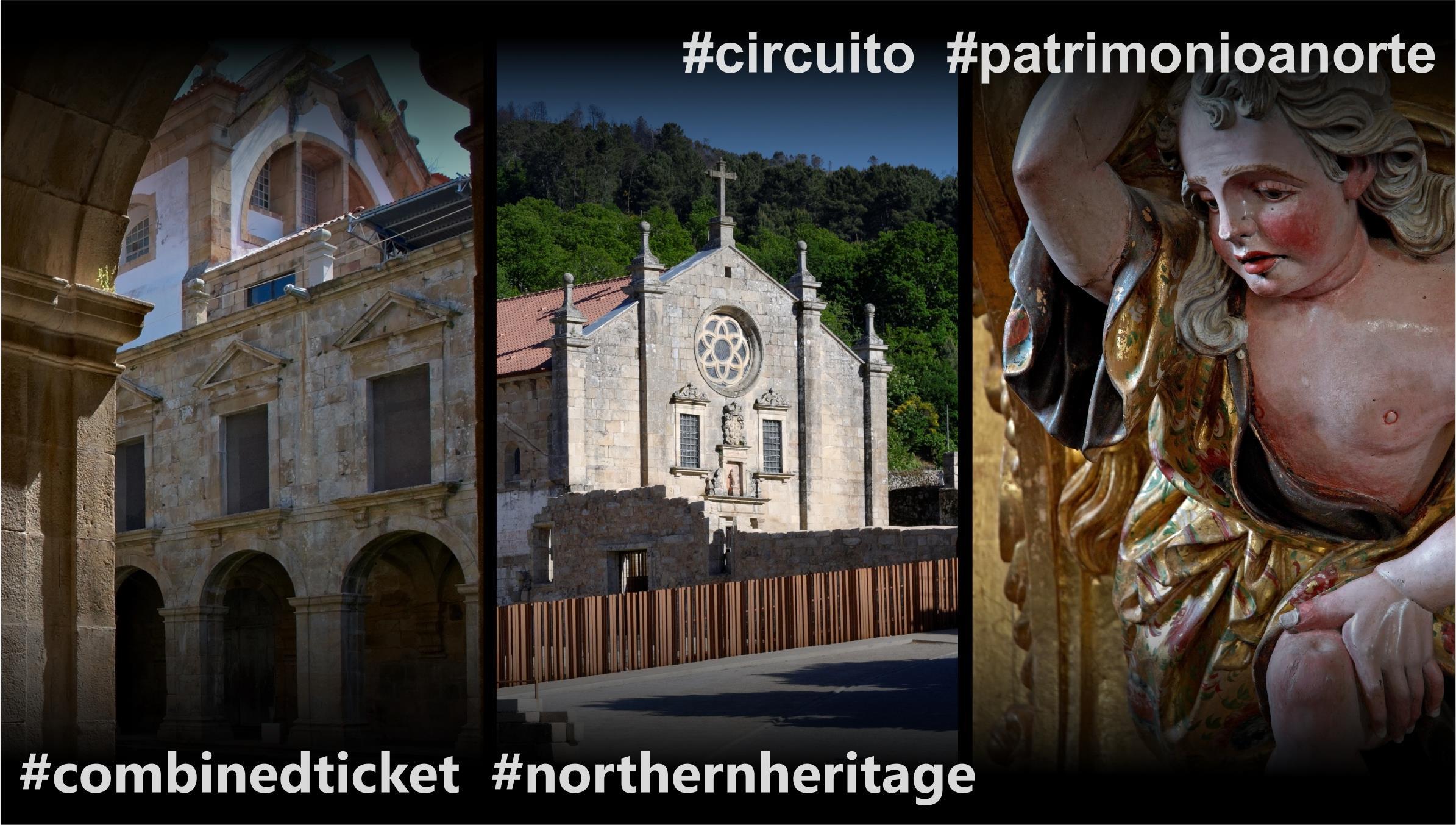Combined Ticket - Varosa Valley

Open: Summer - Tuesday to Sunday 10 a.m-1 p.m / 2 p.m-6 p.m | Winter - Tuesday to Sunday 10 a.m-1 p.m / 2 p.m-5.30 p.m
Closed: Monday; 1st January; Easter Sunday; Labour Day (1st May); 25th December; 8th September (municipal holiday)
Open: Summer - Tuesday to Sunday 10 a.m-1 p.m / 2 p.m-6 p.m | Winter - Tuesday to Sunday 10 a.m-1 p.m / 2 p.m-5.30 p.m
Closed: Monday; 1st January; Easter Sunday; Labour Day (1st May); 25th December; 29th September (municipal holiday)
Open: Summer - Tuesday to Sunday 10 a.m-1 p.m / 2 p.m-6 p.m | Winter - Tuesday to Sunday 10 a.m-1 p.m / 2 p.m-5.30 p.m
Closed: Monday; 1st January; Easter Sunday; Labour Day (1st May); 25th December; 29th September (municipal holiday)
Santa Maria de Salzedas Monastery
With its foundation closely linked to Teresa Afonso, wife of Egas Moniz, the Santa Maria de Salzedas Monastery began to be built in 1168.
Extensively extended in the 17th and 18th centuries, with a new monumental cloister in the 18th century designed by the Maltese architect Carlos Gimac, this male Cistercian monastery boasts works by some of the greatest names in Portuguese painting, such as Vasco Fernandes (Grão Vasco), Bento Coelho da Silveira and Pascoal Parente.
With the extinction of the Religious Orders in Portugal in 1834, the monastery saw its church converted into a parish church and part of the monastic facilities sold to private individuals. Classified as a National Monument in 1997, in 2002, under a protocol with the Diocese of Lamego, the Portuguese State began the progressive renovation of the buildings and facilities.
Its integration, in 2009, in the Vale do Varosa Project, made the opening of the space and its Museological centre to the public possible in October 2011, where you can follow the memory of the monastic complex with the exhibition “Fragmentos. Expressões da Arte Religiosa do Mosteiro de Santa Maria de Salzedas” (Fragments. Religious Art from the Santa Maria de Salzedas Monastery).
Saint John of Tarouca Monastery
The construction of the Saint John of Tarouca Monastery began in 1154. This was the first male Cistercian monastery built on Portuguese territory.
With its foundation closely linked to the foundation of Portugal and to the figure of King Afonso Henriques, the monastic complex was greatly expanded in the 17th and 18th centuries with the construction of new buildings, including a new, colossal two-storey dormitory, the only one of its kind in Portugal.
The year 1834 would dictate the successive dereliction of the building, a direct consequence of the decree of extinction of Religious Orders. The church was converted into a parish church and the monastic premises sold by public auction and its buildings used as quarry until the beginning of the 20th century.
Classified as a National Monument, since 2009 the monastic complex has been part of the Vale do Varosa Project, which allowed the restoration of the Monastery Church and the ruins to be stored in museums, the result of an exhaustive archaeological excavation, one of the largest in Portugal, which took place between 1998 and 2007.
In the Casa da Tulha, a former monastic granary, visitors can see a three-dimensional reconstruction of the monastery and the site's interpretative centre. The Saint John of Tarouca Monastery is one of the most sought after places for those visiting the Douro and Varosa region.
Santo António de Ferreirim Convent
Integrating an earlier fortified tower possibly dating from the 14th century, the foundation of this Franciscan male convent began with the donation, in 1525, of the surrounding land by D. Francisco Coutinho, Count of Marialva.
Of Manueline design, with only the church portico surviving, it is also worth noting the construction of the cloister, which has since disappeared, corresponding to the first half of the 16th century, the period of construction of the church and convent complex.
Extinct in 1834, its church was converted into a parish church and the convent premises sold by public auction and partially dismantled or fallen into ruin. Classified as a Property of Public Interest since 1944, the Santo António de Ferreirim Convent was part of the Varosa Valley Project in 2009, which enabled the restoration of the remaining convent area, where the Interpretation Centre has been installed, open to the public since July 2016.
Inside it, a treasure is hidden: the eight boards painted in 1533-1534 by the so-called "Masters of Ferreirim", a partnership that was unveiled later and that revealed the names of Cristóvão de Figueiredo, Garcia Fernandes and Gregório Lopes as the authors of the paintings.
Come and discover Lamego Museum and the Varosa Valley's network of monuments. We look forward to your visit!